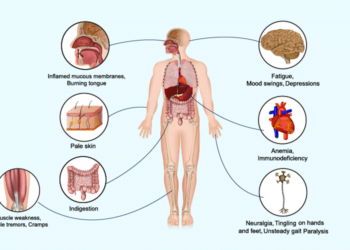
Photographer: Mitchell Feinberg for Bloomberg Businessweek
In October, news of a French butter shortage shook the food world to its croissant-shaped core. Prices tripled in France as consumers nervously hoarded caches. In some areas, as much as 46 percent of demand went unmet, according to Nielsen Holding Plc.
Considering how basic the ingredients are—butter is nothing more than milk cream churned into semisolid, spreadable fat—the shortage seemed implausible. But various economic forces around the world converged to shrink supplies: In 2015 the European Union ceased milk quotas, leading to a brief glut of dairy products that ended up with farmers on the Continent decreasing output by 3 percent. The U.S., meanwhile, had to reduce its exports to meet domestic demand. And a drought in New Zealand, the world’s top dairy exporter, hurt that country’s production. By this fall, butter supplies in France were woefully short, and shelves were stripped of even the top-quality stuff.
The problem of finding high-grade products is hardly unique to the French, however. Butter, like meat and even leafy greens, is an increasingly stratified staple. In the U.S., as consumers have become more culinarily savvy, the competition among gourmet retailers has grown intense. Butters of varying quality are available, with chefs paying as much as $50 a pound for the crème de la crème. A certain amount of expertise is needed to expend one’s butter budget wisely.
The market is divided into two tiers: mass retail products made with milk from a variety of reputable dairy farms, and single-origin spreads available almost exclusively by private order. (In France, many are officially classified by their region of origin, or “AOP.”) Butterfat content, or the percentage of pure natural fat by volume, is the simplest way to measure quality, particularly in the mass market.
Supermarket standbys such as Horizon Organics contain 80 percent butterfat, the minimum set by the U.S. Department of Agriculture. At the top end of the range, craft labels such as Straus Family Creamery, a California-based operation supported by Alice Waters, and France’s AOP Echiré make butters with 84 percent to 86 percent butterfat. (They make it richer by adding less salt during processing and removing more of the watery whey.)
In the second camp lie single-origin butter producers such as Diane St. Clair, a dairy farmer in Orwell, Vt., who has a cultlike following. St. Clair ships her Animal Farm butter to James Beard Foundation Award-winning chefs including Boston’s Barbara Lynch, Patrick O’Connell of the Inn at Little Washington in Virginia, and Thomas Keller. “Diane makes butter from animals born, raised, and cared for on the same location, using techniques that keep the ingredients as close to their natural state as possible,” says Keller, who features Animal Farm butter in bread courses at the French Laundry in Napa Valley and Per Se in Manhattan. “The result is butter with terroir—one shaped by the soil, weather, animals, and plants of her land.”
One week a year, Animal Farm is available through Saxelby Cheesemongers to connoisseurs who don’t possess their own Michelin stars. Saxelby has an agreement with St. Clair to sell her annual excess product to consumers. Last year, Saxelby’s supply of Animal Farm butter retailed for $50 a pound; it sold out in 10 minutes.
How butter is made can help determine how dear it is. Commercial producers separate cream from milk in batches of several gallons each, pasteurize the cream, then machine-churn it into a semisolid spread recognizable to anyone who’s ever eaten a dinner roll. Craft makers, on the other hand, ferment the milk after pasteurization, maturing their product for anywhere from one hour to two weeks.
Liz Thorpe, author of The Book of Cheese and a former vice president of Murray’s Cheese in New York, likens the impact of fermentation to that of aging wine in oak barrels. “Fermented butter has a far more complex flavor, with warm, hazelnutty notes,” she says. “It’s like eating a soft ripened cheese on bread instead of just a schmear of something fatty.”
How to Choose
Knowing the terminology is key: Almost all European butter is fermented, but American products that have undergone the process are typically marketed as “cultured butter.”
As with any craft product, you pay for its scarcity. In addition to the hands-on attention and expertise required by small-batch separation and fermentation, luxury butter requires milk from expensively bred cattle. Straus Family Creamery and Echiré source milk from regional cooperatives that meet special standards.
And while most commercial dairies in the U.S. breed black-and-white Holstein Friesian cattle, Animal Farm and a similar U.K. label, Ampersand, raise tawny Jersey cows. Grass-fed Jerseys process the carotene in grass differently than their brethren do, resulting in cream higher in butterfat even before craft processing. Jerseys also produce less milk, raising the cost of labor by volume.
In addition to its richer taste and creamier texture, high-butterfat butter contains less moisture and thus reacts better to cooking heat. It’s less likely to separate over high temperatures on the stovetop and imparts a delicate crumb to baked goods. Swapping out conventional butter for a luxury label doesn’t require altering a recipe, but it will absolutely improve the flavor.
As for limited-edition spreads including Animal Farm or even a more accessible option such as the American-made $5-per-half-pound Plugra, cook (and bake) at your own financial risk. Just as you wouldn’t pour a 1959 Château Lafite Rothschild into a pot of beef bourguignon, single-origin butters are best savored in the raw. Spread them on radishes or high-quality bread.
“None of the restaurants I sell to cook with my butter,” says St. Clair, the dairy farmer. “I’m sure it would be delicious. But it’s sort of a waste of the nuance to melt it down and hide it in other things.”
Fancy Butter Buying Guide

Delitia Butter of Parma (1)
Adhering to the same guidelines and using the same milk as Parmigiano-Reggiano DOP cheese, this Italian spread contains 84 percent butterfat, yielding sweet, almost grassy notes and a very smooth texture for about $7 a pound.
Animal Farm (2)
St. Clair’s label is the table butter of choice for chefs Keller and Lynch. St. Clair raises a small coterie of Jersey cattle on grass and separates their 87 percent-butterfat cream by hand. She ferments it for 24 hours in the cows’ own buttermilk, then churns it into a dandelion-yellow spread. Animal Farm is publicly available for one week a year at $50 per pound from Saxelby Cheesemongers.
Plugra (3)
This American brand provides an accessible entree to traditionally made butter. Available nationwide, and starting at $10 a pound, Plugra has one especially discerning fan: Famed baker François Payard says it produces pastry creams and crusts comparable to those of Lescure, an AOP French label. It’s more milky than conventional American supermarket butters, but it arguably lacks the richness and nuanced flavors of a single-origin product.
Double Devon Cream Butter (4)
Scone enthusiasts will appreciate this rich, eggshell-hued contender from the south of England. Lightly salted and churned from the same milk as Devon cream, 8-ounce logs of Double Devon Cream can be purchased for $7.50 from Amazon.com.
Echiré Beurre de Baratte (5)
Made with milk from cows raised within 32 miles of the dairy in western France, this butter from the AOP cooperative contains 84 percent butterfat and is hand-churned in wooden barrels that date to 1894. It has a silky, easily spreadable consistency and an almost yogurtlike tang. Most Echiré products remain in France, but Amazon and Zabar’s distribute them internationally. Expect to pay $18 to $20 a pound, plus a hefty delivery fee.
Straus Family Creamery (6)
This family-run farm in California began making organic, traditionally churned butter at the behest of Alice Waters in 1992. Also favored by Atelier Crenn and Meadowood and made with milk from sustainable regional farms, Straus butters are sold at select stores, including Whole Foods Markets in the western U.S. It has the sort of full, warm flavor a sommelier might describe as “round.” From $16 a pound.
Delitia Buffalo Milk Butter (7)
A sister spread to Delitia Butter of Parma, this one uses water buffalo milk akin to the Italian region’s mozzarella di bufala. It’s available via online retailers for $15 a pound.
Ampersand (8)
Chef Grant Harrington, who’s worked for Gordon Ramsay and at Swedish destination restaurant Fäviken, matures his cultured Jersey milk for up to two weeks, then adds pink Himalayan salt and hand-churns it to order for Michelin-starred establishments across the U.K. Half-pound wheels can be preordered at butterculture.bigcartel.com for pickup at London’s Maltby Street Market. From £4.50 ($6.06) for 200 grams.
[“Source-ndtv”]







